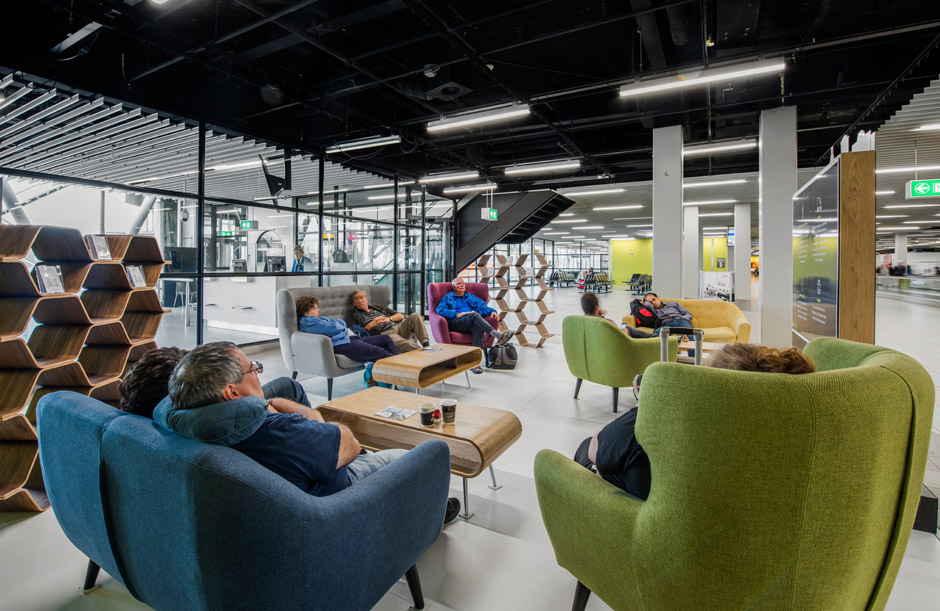On transparency and ‘showrooming’ in travel retail: New rules in customer experience
Customer experience marketing has some unbeatable advantages for airports. To start with, airports make it easy to enter a store as the shops have no doors. Also, the holiday feeling increases the tendency to spoil oneself. But, to really put down an unforgettable brand experience, it is time to step up the game.

When we contemplate the future of shopping experiences, we are likely to think in terms of technology. And yes, there are unmissable gadgets that serve modern customers in their demands for digital servicing and connection. For example, London Heathrow Airport and Sunglass Hut used ‘assistive shopping technology’ via interactive mirrors to make the experience more engaging. But despite these interesting tech developments, customers never stop valuing real human interactions and sensory marketing. In fact, it is getting more and more important.
Connection
A good relationship with your customer is everything. It is all about trust, about connecting. Love and respect for both customers and the world they live in is crucial, as Saatchi & Saatchi CEO Kevin Roberts already made clear in his iconic book, Lovemarks. Now this is no longer marketing speak, it’s going to be the norm.
For a fact we know that 78% of millennials prefer to spend more money on experiences than on material things. The new generation is not easily influenced by accessible stores and approachable concepts and offers. They demand genuine experiences and information. Real information. Transparency. How are the products made? And, is the story behind the product authentic? Brands that present accurate knowledge, true stories about the production process and unforgettable experiences are winning.
Bacardi Global Travel Retail with gin brand Bombay Sapphire set a great example at Schiphol Airport this spring. They let travellers experience an explosion of taste in their real life ‘House of Bombay’. A replica of the tropical greenhouse, used in the English distillery to grow exotic ingredients to make the gin, was built in Lounge 2 at the airport. The replica included bird and waterfall sounds. Foam bells of gin were dropped from the ceiling for a unique taste experience and were a lust for the eye. Taste, sight, touch, smell, and sound… All were served. Over 2.5 million passengers at the airport had the opportunity to engage the Bombay Botanic Flavours, and the results were incredible: Bombay Sapphire’s sales increased 365%. Experience marketing taken to a next level, so to say.
Showroom
The demand for more information and transparency, along with the never disappearing need to touch and test things, creates great opportunities. But, within this trend the purpose of a store is radically changing. Some marketeers call this ‘showrooming’ which has kind of a pessimistic connotation. Customers come to the store to check out a product. Then they walk outside, go online to read some reviews, look for the best deal and buy it a few moments later. Or not.
The fact is- goods can be bought anywhere, anytime. Customers are doing this anyway, so we might as well embrace it. Why not get the most out of the in store experience? Why not embrace this role as a showroom? Customers want to interact with what they buy, and in store marketing can provide this. Here lies a huge opportunity for retailers. “Rituals does a good job offering brand experience at Schiphol Airport with their Travel Spa, for example, where you can get a hand or foot treatment to release stress,” says Frank Quix, Managing director of Q&A and lecturer in Retail Strategy & Marketing at Amsterdam Business School. “Transaction points can become attraction points. So, it is not about the actual sales on the spot, but the experience of the product or the brand. And it doesn’t really matter where you buy it, or when.”
A great example of this is ‘Lil’ Amsterdam’, which opened at Amsterdam Central Station in 2017. This gangway is set up as a shopping mall focussed on experience. With eighteen regularly changing pop-ups that showcase the best the city has to offer- shops, horeca, art, culture- it makes ideal use of travellers' waiting time. The airport, actually, is also the perfect place to engage to this trend. Think about the possibility to actually sit in a brand new car, to experience new perfume or electronica, or to get in touch with promotion teams telling the real story behind a product. Also there are lots of possibilities at the airport to be around to show the brands’ purpose and be useful or helpful to passengers. By sponsoring the luggage trolleys as TUI does, or even the luggage belt, as ING Bank did this year by colouring it in rainbow colours as a sponsor of the Amsterdam Gay Pride.
Consumers nowadays are more conscious about what they buy. Global responsibility, sustainability and even minimalism are trending. The why behind the buy is becoming more important than the product itself. So, customers are seeking for unforgettable experiences in shopping areas. If the experience is great, personalised, and authentic, potential customers are very likely to share this with others, recommend your brand, pass on your story and probably stay with you forever.